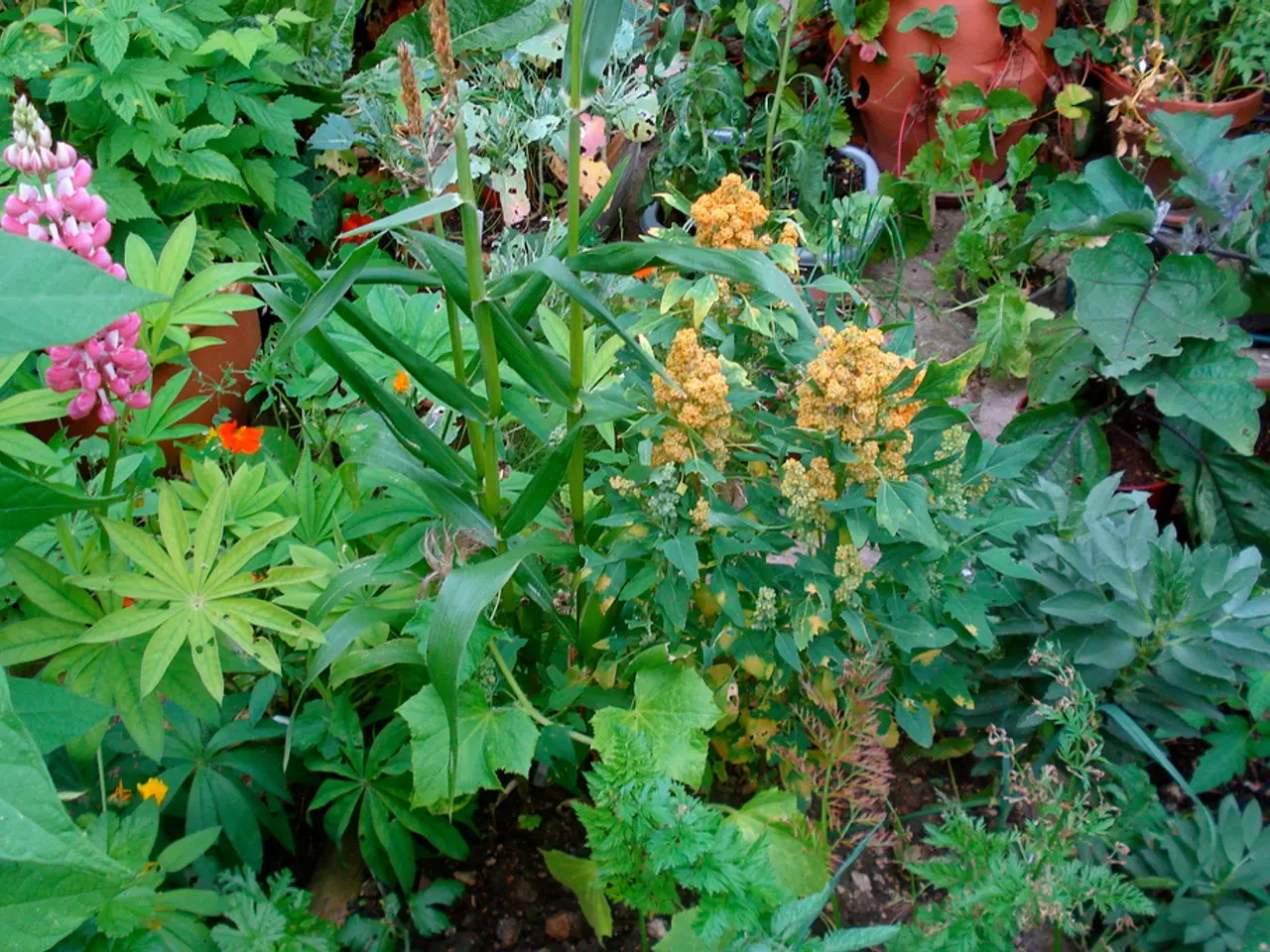Maintaining Floral Vigor
In the realm of agriculture, a unique system is making waves by facilitating the development of Integrated Plant Health Management (IPHM) strategies tailored to various cropping systems. This approach, often encompassed within Integrated Pest Management (IPM), aims to manage plant pests and pathogens effectively and sustainably.
IPHM employs a combination of methods, including cultural, biological, physical, and chemical practices. These methods are designed to prevent the establishment and development of pests, accurately identify harmful ones, and effectively control their populations, all while minimising environmental impact and encouraging natural ecosystem balance.
One of the key strategies in IPHM is setting action thresholds, determining the pest population level at which action is needed to avoid economic or ecological damage. This prevents unnecessary interventions when pest numbers are low. Regular monitoring and identification of pests ensure that only harmful ones are targeted, enabling precise and effective control.
Prevention plays a crucial role in IPHM. This includes crop rotation, planting pest-resistant varieties, maintaining healthy soil, sanitation, and encouraging natural predators. These practices help reduce pest establishment and development.
Biological control, an eco-friendly alternative to pesticides, uses organisms to suppress, kill, or restrict the activity of plant pests or pathogens. For example, ladybugs are often used to control aphid populations. Mechanical and physical controls, such as trapping, weeding, manual removal of pests, and barriers to prevent pest access, also minimise chemical use and are often low-risk.
Chemical controls are used as a last resort and in a targeted manner, with preference for low-toxicity options. These include pheromones for mating disruption and selective pesticides to reduce harm to beneficial organisms.
Modern IPHM leverages technological tools like pest forecasting, remote sensing, and data integration to predict pest outbreaks and optimise control timing, enhancing efficiency and ecological sustainability. Integrated Weed Management (IWM) specifically addresses weed management, combining herbicides with alternative tactics to prevent herbicide resistance and improve soil health.
IPHM strategies are developed based on considerations such as personal experience, public perception, availability of effective options, and profit margin. Biocontrol organisms, for instance, kill or suppress pathogens and pests through parasitism, competition, toxin production, or physiological/biochemical changes in host plants.
Regulatory measures, such as quarantines and pest eradication programs, are crucial in limiting the introduction or spread of deleterious plant pests and/or pathogens. Many greenhouses and nurseries use quarantine measures to separate new material from the old, preventing the spread of pathogens to other plants. Strict government inspections and quarantines of imported plants, plant products, and soil can help keep pests and pathogens out of a region or area.
Government eradication programs are conducted when a serious insect or disease pest breaks out, requiring highly trained personnel to recognise pathogens and symptoms. The Ohio State University's Department of Plant Pathology is a valuable source of information on plant diseases and IPHM strategies.
In conclusion, IPHM offers a comprehensive and sustainable approach to managing plant pests and pathogens. By reducing reliance on chemicals, minimising environmental impact, encouraging natural ecosystem balance, and enhancing long-term crop health and productivity, IPHM is a promising solution for the future of agriculture.
- Agriculture is witnessing a revolution with the implementation of Integrated Plant Health Management (IPHM) strategies, crafted to cater to different farming systems and cropping patterns.
- IPHM adopts a multifaceted approach, encompassing cultural, biological, physical, and chemical practices, to prevent, identify, and control plant pests and pathogens.
- The agricultural health-and-wellness pursuit calls for small-scale farmers, students of education-and-self-development, and enthusiasts of personal-growth to learn the practices of setting action thresholds, crop rotation, and planting pest-resistant varieties for better soil management and pest prevention.
- Pest control can be achieved through eco-friendly alternatives such as biological control, where organisms like ladybugs assist in controlling aphid populations or through mechanical and physical controls like trapping, weeding, and barriers for low-risk solutions.
- Chemical controls are employed judiciously and selectively, prioritising less-toxic options like pheromones for mating disruption and targeted pesticides to preserve the health of beneficial organisms.
- Advances in science and technology contribute to the development of IPHM strategies with tools like pest forecasting, remote sensing, and data integration, helping optimize control timing and promote efficiency and ecological sustainability.






